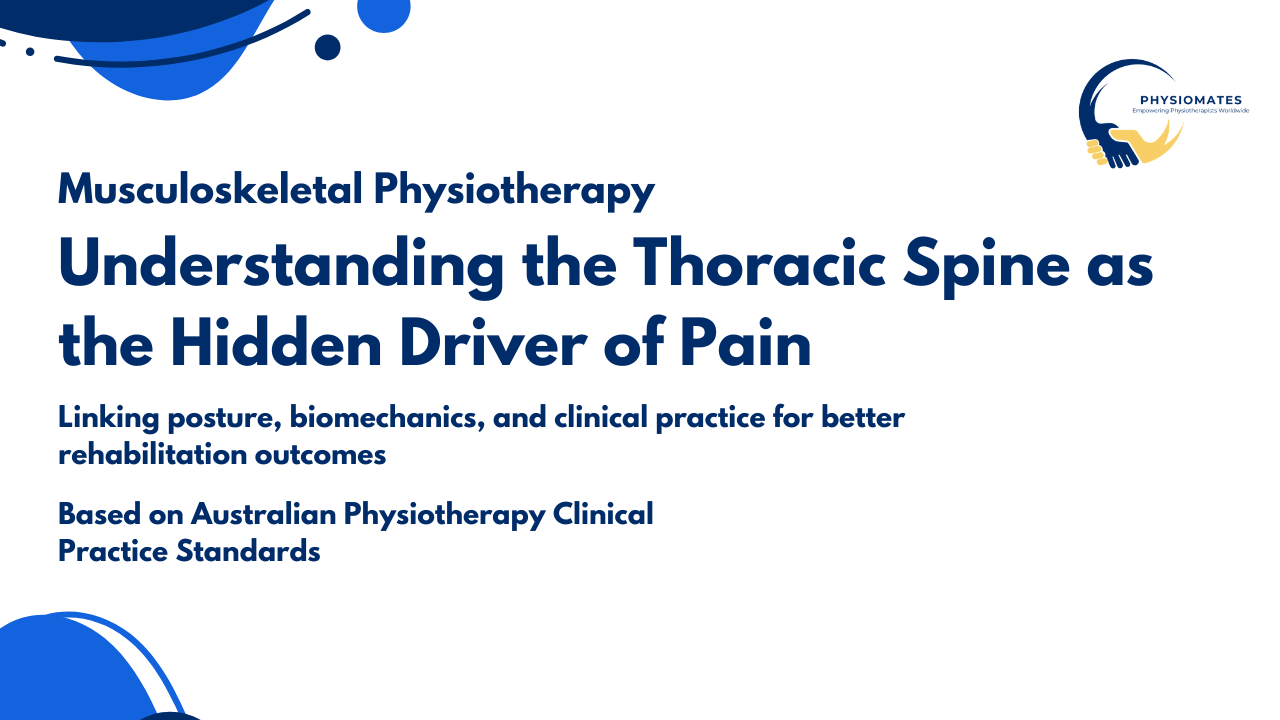
About Course
About the Musculoskeletal Physiotherapy Course
The thoracic spine is often overlooked in musculoskeletal assessment, yet it plays a pivotal role in posture, breathing, upper limb function, and spinal mechanics. Dysfunction in this region can contribute to headaches, neck pain, shoulder limitations, and even low back issues.
Thank you for reading this post, don't forget to subscribe!This pd course, provides a comprehensive exploration of thoracic spine anatomy, biomechanics, and clinical application. Through interactive discussions, roleplay, live demonstrations, and symptom modification strategies, learners will gain the skills to recognize and address thoracic spine contributions to musculoskeletal pain.
By the end of this physiotherapy pd course, you’ll understand how to integrate thoracic spine assessment into clinical practice and rehabilitation programs to achieve better outcomes for patients and athletes alike.
About the Musculoskeletal Physiotherapy Program Instructor

The musculoskeletal physiotherapy program is led by Mustufa Kagdi, MACP, APAM, a highly accomplished Titled APA Musculoskeletal and Sports & Exercise Physiotherapist based in Australia. With nearly two decades of experience in advanced manual therapy, biomechanics, and pain science, Mustufa has successfully mentored physiotherapists at all levels.
Having completed his Master of Manual and Sports Physiotherapy at the University of South Australia, Mustufa brings a wealth of knowledge about Australian physiotherapy practice and standards. His interactive teaching style and deep understanding of clinical reasoning make this program a must for international physiotherapists aiming to thrive in Australia.
Course Content
Lesson 1
Topic 1
32:54
Lesson 2
Lesson 3
Assignment
Student Ratings & Reviews

